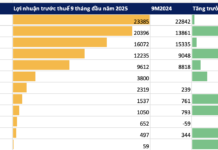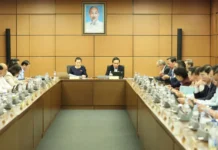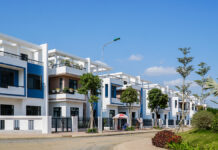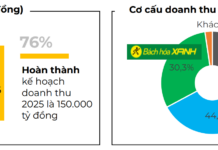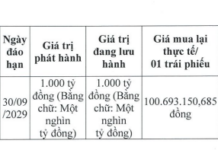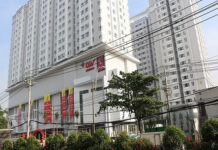Proposal to Transform Hoa Lac Airport into a Dual-Use Facility
In a recent meeting held on April 18th, the Chairman of Hanoi’s People’s Committee, Tran Sy Thanh, and his delegation met with the Standing Committee of the Hoa Binh Provincial Party Committee to discuss various aspects of cooperation between the two regions.
During the meeting, representatives proposed several initiatives to enhance collaboration in areas such as investment promotion, industry, agriculture, culture, sports, tourism, transportation, healthcare, education, environmental protection, security, and social welfare.

Chairman Tran Sy Thanh also announced Hanoi’s proposal to the Ministry of Defense to convert Hoa Lac Airport into a dual-use facility, serving both military and civil aviation purposes. If approved, Hanoi would have three airports for civilian operations: Noi Bai Airport, Hoa Lac Airport, and Ung Hoa Airport (as per the Capital Region’s 2021-2030 Plan).
This development would significantly enhance connectivity and promote economic and social growth in the western and southwestern regions of Hanoi and Hoa Binh Province.
Additionally, the Hoa Binh Province and Hanoi Municipality have collaborated closely on the construction and improvement of National Highway 6 (Xuan Mai – Hoa Binh), the expansion project of the Hoa Lac – Hoa Binh road, and the construction of the Ring Road 5.
Second Airport for Hanoi: Location and Timeline
Regarding the development of air transportation infrastructure, in December 2023, the Hanoi People’s Council approved a Resolution on the Adjusted General Planning for the Capital City of Hanoi to 2045, with a vision to 2065.
The adjustments were made to align with the Capital Region’s 2021-2030 Planning and Vision to 2050.
According to the Hanoi People’s Committee, the plan outlines comprehensive development goals, strategies, and key solutions, including those related to air transportation.
The plan proposes new initiatives to establish Hanoi as a globally connected city and an economic and social development hub for the nation. It also emphasizes the significance of the Red River as a focal point and vital feature of the urbanization of the Red River Delta region, introduces the concept of a “city within the capital,” proposes the development of a second airport south of Hanoi, promotes Transit-Oriented Development (TOD), and outlines plans for urban renewal and green corridors.

The city is also updating and reviewing the National Aviation Infrastructure Development Plan (2021-2030, with a vision to 2050).
Noi Bai International Airport will remain a vital gateway for international travel to the northern region and Hanoi in particular. It will be upgraded to a Category 4F airport, handling up to 60 million passengers annually by 2030 and 100 million by 2050. Its area will expand to 1,500 hectares by 2030 and 2,200 hectares by 2050. The proposed second airport will support Noi Bai Airport and be located south of the capital.
The plan designates the second Capital Region Airport to be situated in the Ung Hoa and Phu Xuyen districts. It will be strategically located near the Northwest Expressway, National Highway 5, the Phap Van – Cau Gie Expressway, National Highway 1A, the North-South High-Speed Railway, the North-South United Railway, and the Southern Economic Corridor, covering areas in the Ung Hoa and Phu Xuyen districts. The airport is expected to handle approximately 50 million passengers annually.
In February 2024, during the Capital Region’s Planning Review Meeting (2021-2030, Vision to 2050) held at the Ministry of Planning and Investment, Minister Nguyen Chi Dung emphasized the importance of the second airport in the context of infrastructure development.
He highlighted the need to develop and utilize underground spaces, improve transportation infrastructure to address traffic congestion, and invest in the second airport in the Phu Xuyen – Ung Hoa area. Additionally, he stressed the significance of digital infrastructure, adopting modern and intelligent transportation methods, addressing flooding and environmental pollution (particularly air quality), and implementing measures to improve air quality in Hanoi, which currently ranks among the most polluted cities globally.
The construction of the second Hanoi airport is scheduled to commence in 2040, with operations set to begin by 2050.






